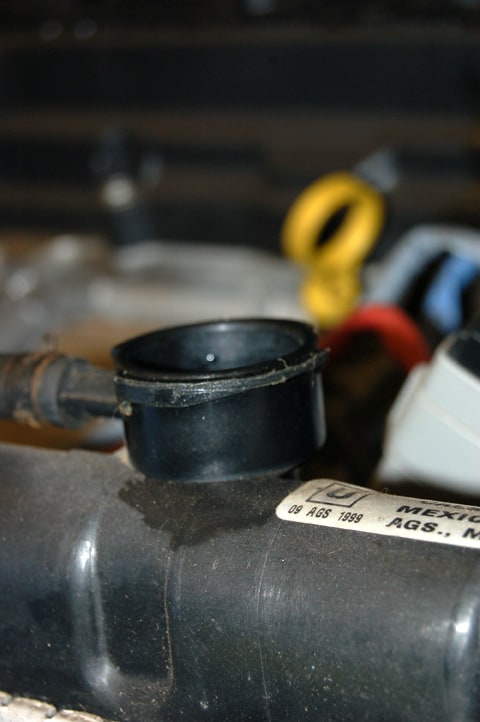Service professional’s procedures for drain fill and bleed
Before draining the coolant, warm up the vehicle until the thermostat opens. Shut the engine off and place a pan under the radiator drain (the petcock) to catch the old coolant. Turning the petcock to loosen it will allow coolant to drain from the radiator. Once the coolant stops flowing, the pressure from the system has been released and you can remove the radiator cap to allow the coolant to drain completely.
Don’t forget that there is coolant in the engine block. Some vehicles have a drain plug located on the block to remove the coolant from the engine. It’s best to look up the procedure in the manufacturer’s repair manual for this information since it will be different for each vehicle. Also, don’t forget to empty the reservoir.
As an alternative, specialized coolant exchange equipment can be used to completely remove all the fluid in the system.
Close the petcock and fill the radiator with the proper mixture of antifreeze, a 50-50 mix of antifreeze and water. Start the vehicle and monitor the coolant level in the radiator. On a vehicle with the filler neck above the engine block, the coolant will rise slowly until the thermostat opens then the level will drop drastically since coolant is now able to flow throughout the whole. Add coolant to fill the radiator and install the radiator cap. Turning the heater on inside the car will circulate coolant through the heater core as well.
Vehicles with the filler neck below the engine block usually have bleeder valve somewhere in the system. Locate the valve and open it, then begin to fill the radiator. Add coolant until it starts to bleed from the valve. Close the valve, start the engine and set the heater to hottest setting. Once the engine is warm. open the bleeder valve to release any air trapped in the system. Once coolant starts coming out of the bleeder valve, close the valve. Fill the coolant to the proper level and replace the radiator cap.
Don’t forget to refill the reservoir.
Always consult the original equipment manufacturers recommendations for this and all service procedures and for best results visit a service professional.
When having your mobile A/C system professionally serviced, insist on proper repair procedures and quality replacement parts. Insist on recovery and recycling so that refrigerant can be reused and not released into the atmosphere.
You can E-mail us at macsworldwide@macsw.org or visit http://bit.ly/cf7az8 to find a Mobile Air Conditioning Society repair shop in your area. Visit http://bit.ly/9FxwTh to find out more about your car’s mobile A/C and engine cooling system.

